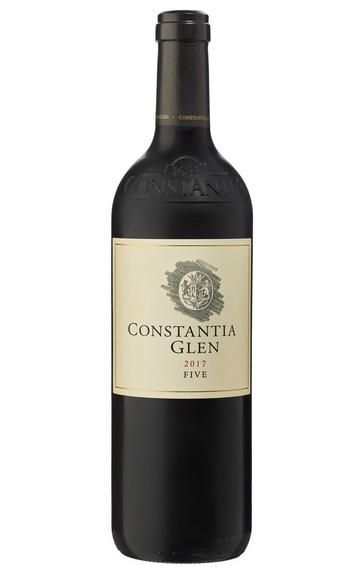
2017 Constantia Glen, Five, Constantia, South Africa
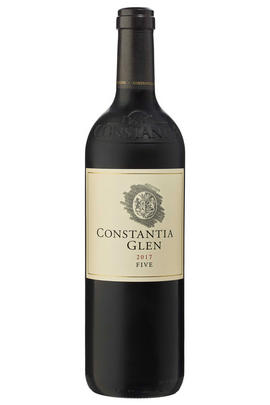
Critics reviews
Drink 2021 - 2030
Anthony Mueller, Wine Advocate (May 2021)
Intense cassis, graphite, eucalypt, and violets on the nose. A plush palate of fine-grained tannins with black plum, black cherry, and blackcurrant leaf character. Love the weightless concentration and supreme elegance. This is top drawer.
Platinum Medal, Decanter World Wine Awards 2021
About this WINE
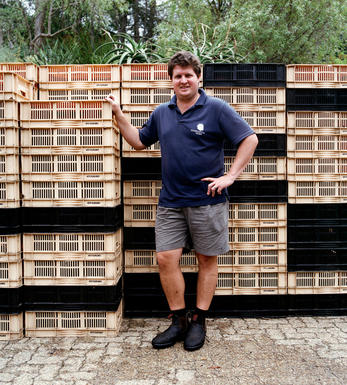
Constantia Glen
Constantia Glen is the newest of the eight wineries which have established themselves in the enclave of Constantia in South Africa, close to Cape Town itself. A landscape with a rich viticultural history, it is widely regarded as one of the country’s finest natural areas in which to produce premium wine.
Although the region is more commonly known for its white varietals, Constantia Glen’s unique position – lying between a gap in the mountains – allows red grapes to mature perfectly here as they bask in an additional one and a half hours’ sunlight every day. As such, Constantia Glen has made a name for its elegant, complex and beautifully balanced Bordeaux blends, wines which show exceptional value for money.
The red wines are based on the traditional Bordeaux grapes. The “Three” uses Cabernet Sauvignon, Cabernet Franc and Merlot; while the “Five” has the addition of Malbec and Petit Verdot.
The reds are joined by two whites: a refreshing, crisp and classically proportioned Sauvignon Blanc and an energetic blend, the “Two”, which is made predominantly with Sauvignon Blanc (as one of the most aromatically pure examples in the country), with a touch of Sémillon to enhance its many layers.
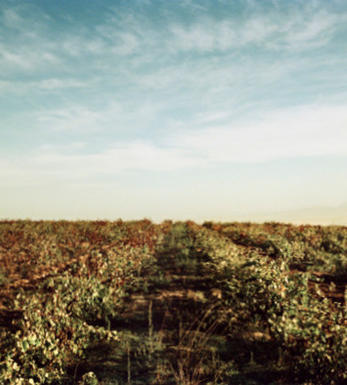
Constantia
The historically important if tiny wine district of Constantia lies in Cape Town’s southern wards, and on the most southerly point of Africa, the Cape of Good Hope.
Constantia is most famous for its ancient dessert wine Vin de Constance (made from Muscat de Frontignan) as produced by Klein Constantia estate.
The cooling, south-easterly sea breezes make Constantia a natural site for Sauvignon Blanc, Semillon as well as Muscat.
The district is home to a mere 8 wine estates, including Klein Constantia, Groot Constantia, Buitervenwachting, Constantia Uitsig, Eagles' Nest, Steenberg, Constantia Glen
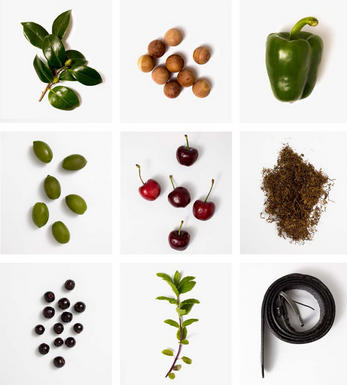
Cabernet Sauvignon
The most famous red wine grape in the world and one of the most widely planted.
It is adaptable to a wide range of soils, although it performs particularly well on well-drained, low-fertile soils. It has small, dusty, black-blue berries with thick skins that produce deeply coloured, full-bodied wines with notable tannins. Its spiritual home is the Médoc and Graves regions of Bordeaux where it thrives on the well-drained gravel-rich soils producing tannic wines with piercing blackcurrant fruits that develop complex cedarwood and cigar box nuances when fully mature.
The grape is widely planted in California where Cabernet Sauvignon based wines are distinguished by their rich mixture of cassis, mint, eucalyptus and vanilla oak. It is planted across Australia and with particular success in Coonawarra where it is suited to the famed Terra Rossa soil. In Italy barrique aged Cabernet Sauvignon is a key component in Super Tuscans such as Tignanello and Sassicaia, either on its own or as part of a blend with Sangiovese.


Buying options
Add to wishlist
Description
There is a polished quality to this wine, with all the hallmarks of New World fruit. With age, the concentrated cassis fruit takes a back seat; herbal notes of thyme emerge. There’s a subtle earthiness, too – no doubt thanks to the 17% Cabernet Franc in the blend. The palate is lush with a mouthcoating texture, brilliantly juxtaposed with the herbal, earthy aromatics and a racy finish. It was delicious with a rack of dry-aged hogget and a medley of Mediterranean inspired vegetables. But with its balance and concluding freshness, this would suit a range of red-meat dishes or a lavish sharing platter of charcuterie and cheese.
Adam Holden, Director to the Chairman's Office, Berry Bros. & Rudd (May 2021)
wine at a glance
Delivery and quality guarantee